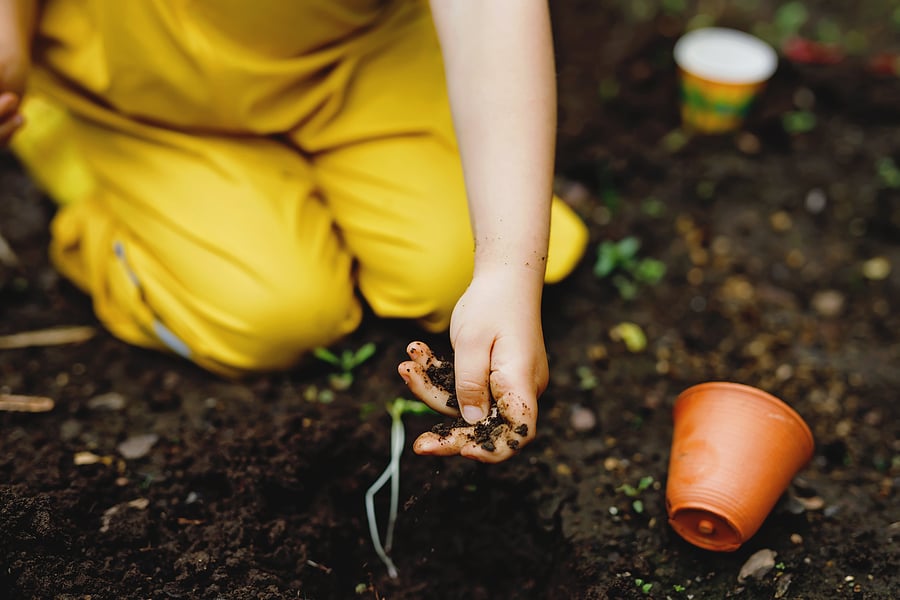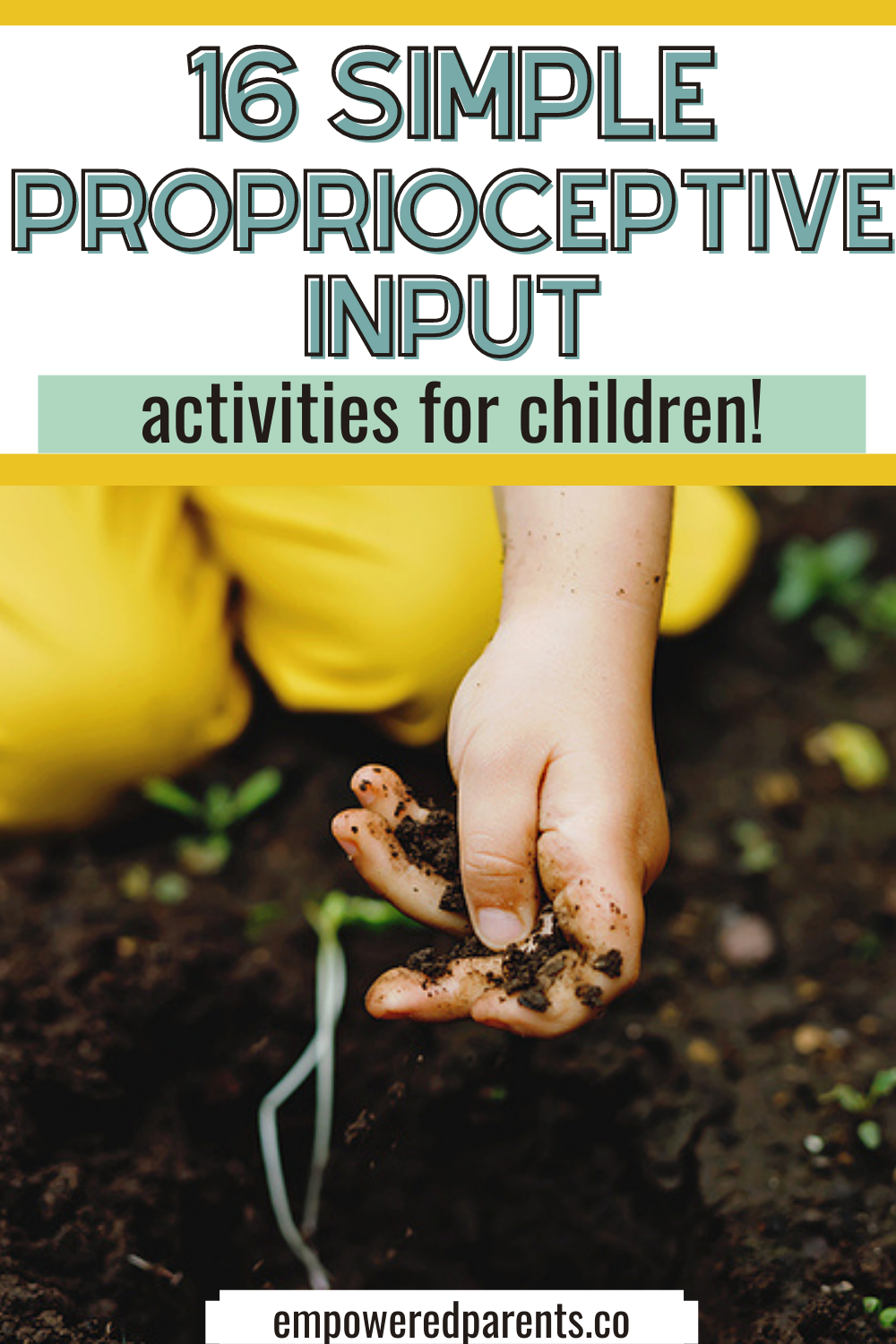We all know about the five basic senses of smell, taste, touch, sight and hearing, and that the sensing organs communicate with the brain to share information.
But the human body relies on other senses, as well. Proprioceptive sensory input through the muscles and joints is also essential.
Let’s take a look at why proprioception is important in child development.
What is Proprioception?
Proprioception relates to a person’s awareness of body position and where their body is located in space.
What does proprioception help with?
The proprioceptive system helps bodies adjust to various situations like sitting, jumping, standing, crawling and using writing instruments.
It also involves motor planning to effectively move by using input from all the available senses.
Examples of Proprioception
Most of the movements that humans make each day are taken for granted. But many senses are actually involved, including proprioception, in order to effectively carry out movements such as the following examples:
- Using the right amount of force when walking on soft grass vs. hard cement
- Placing hands correctly when catching a ball
- Pressing on a crayon with the right amount of force and not breaking it
- Touching hands to a named spot on the body without looking
- Holding something fragile without crushing it

What is Proprioceptive Seeking Behavior?
When children have issues with noticing or correctly processing all sensory input, they sometimes try to make up for this by gaining more sensory information.
Proprioceptive input seeking can cause behaviours that fit with hyperactivity.
These kids often bang their heads, chew on everything, play roughly with others, run instead of walk, tear the paper when writing or colouring, walk on their tiptoes and generally stay on the move.
What is Proprioceptive Avoiding Behavior?
Children who struggle in their sensory development sometimes feel overwhelmed by sensory input and avoid it.
These are the kids who cover their ears when noises seem too loud, do not like touching certain kinds of textures, or remove themselves from the busy part of a room.
They often do not like clothes that feel too tight, activities that require physical effort, or hugs.
Proprioceptive Input Activities for Children
Here are 16 simple things you can do with young children for proprioceptive input.
1. Oral Activities
Offer your children gum or foods that require active chewing and drinks or even applesauce to suck through a straw.
Make a bubble solution available for kids to blow through a bubble wand.
Blowing up balloons or playing wind instruments offer similar benefits.
2. Calming Activities
Use weighted blankets and weighted vests to calm emotions and behaviours.
Carrying beanbags in pockets offers the same effect.
Swinging on the playground is a very calming activity for many children.
3. Heavy Work
Make this kind of activity into “play” or ask your kids to “help” you.
Heavy work includes pushing, pulling, crawling, lifting and carrying.
Gardening, washing the car, furniture moving/stacking, indoor clean-up time, sweeping/mopping and shopping are scenarios where these movements are easy to incorporate.

4. Exercise Activities
Plan fun exercises for kids, such as push-ups and jumping jacks. Urge them to walk in various ways, such as wheelbarrow walking or crab walking.
Try tug-of-war, hopscotch, swimming, jump rope, pillow fights, rope climbing, leapfrogging and bouncing on an exercise ball.
5. Outdoor Free Play/Recess
Although planned activities can be wonderful, allowing children the freedom to play as they choose while outdoors helps to make sure everyone’s needs are being met.
Whether they are “seekers” or “avoiders,” kids can choose what feels good for them.
6. Fine Motor Activities
Offer the children a wide variety of materials to engage in fine motor activities such as colouring, drawing, cutting and building.
Manipulating playdough, crumpling paper and playing with fidget spinners are often favourites.

7. High Energy Activities
Skipping, running and trampoline jumping are movements that require plenty of energy and get that heart rate up.
Set up an obstacle course and add the challenge of a time limit to urge fast movement.
8. Playground Activities
Offer unstructured free play time for children to use playground equipment.
Swinging, climbing, hanging, pushing, pulling and sliding are all beneficial for muscles, mood and brains!
9. Passive Activities
Hug children tightly or apply deep pressure to arms and shoulders.
Play the hotdog game, in which one child is rolled up in a blanket and another child plays at spreading the various condiments on the hotdog.
In the “steamroller,” an exercise ball is rolled over a child who is lying on their tummy.
10. Resistance Activities
Using stretchy, elastic exercise bands, a child stands in the middle of the band and holds both ends with their hands. Then, they curl up one arm while holding the other still.
Another idea is to move both arms at the same time, flapping them like wings.
Bands can also be wrapped around chair legs for the kids to stretch with their feet/legs.
11. Rhythm/Music Activities
Use songs with a catchy rhythm to sing and move around.
For example, sing “The Ants Go Marching” while kids sing, march and stomp.

12. Movement with a Purpose
Adults are sometimes tempted to say, “Go outside and run around for a while.” This suggestion could work for some children but not for others.
Instead, offer a more precise challenge: “Let’s see how long it takes you to run around the house three times!” or “Can you move that heavy box all the way across the room?”
13. Ball Activities
Balls of all different types can be used in so many different ways.
Use them for kicking, throwing, catching, bouncing, squeezing, rolling, pushing, carrying (weighted) and blowing.

Here are some ideas for ball activities for kids.
14. Yoga
Show kids how to move and stretch into various yoga poses.
These can be done on the floor/mats or in chairs, both individually and with partners.
15. Sports
Keeping score and having winners and losers is often not appealing to young kids, but many sports can be played just for fun while gaining proprioceptive benefits.
Try dodgeball, tag, frisbee or kicking soccer balls.
16. Scavenger Hunt
Hide various items, indoors or outside. Children wear a backpack or pull a wagon for resistance, adding their items to them as they are discovered.
Each child is different, depending on their sensory development, and you should expect their responses to proprioceptive activities to vary, as well.
An activity that over-stimulates one child can be a “just right” fit for another.
Try them out and see what works for your children!
Sources:
https://www.ssdmo.org/cool_tools/inclusive/Resources/trying_to_make_sense_resources.pdf
https://wsascd.org/downloads/annual_conference/Sensory_Accomm_for_the_Classroom.pdf

